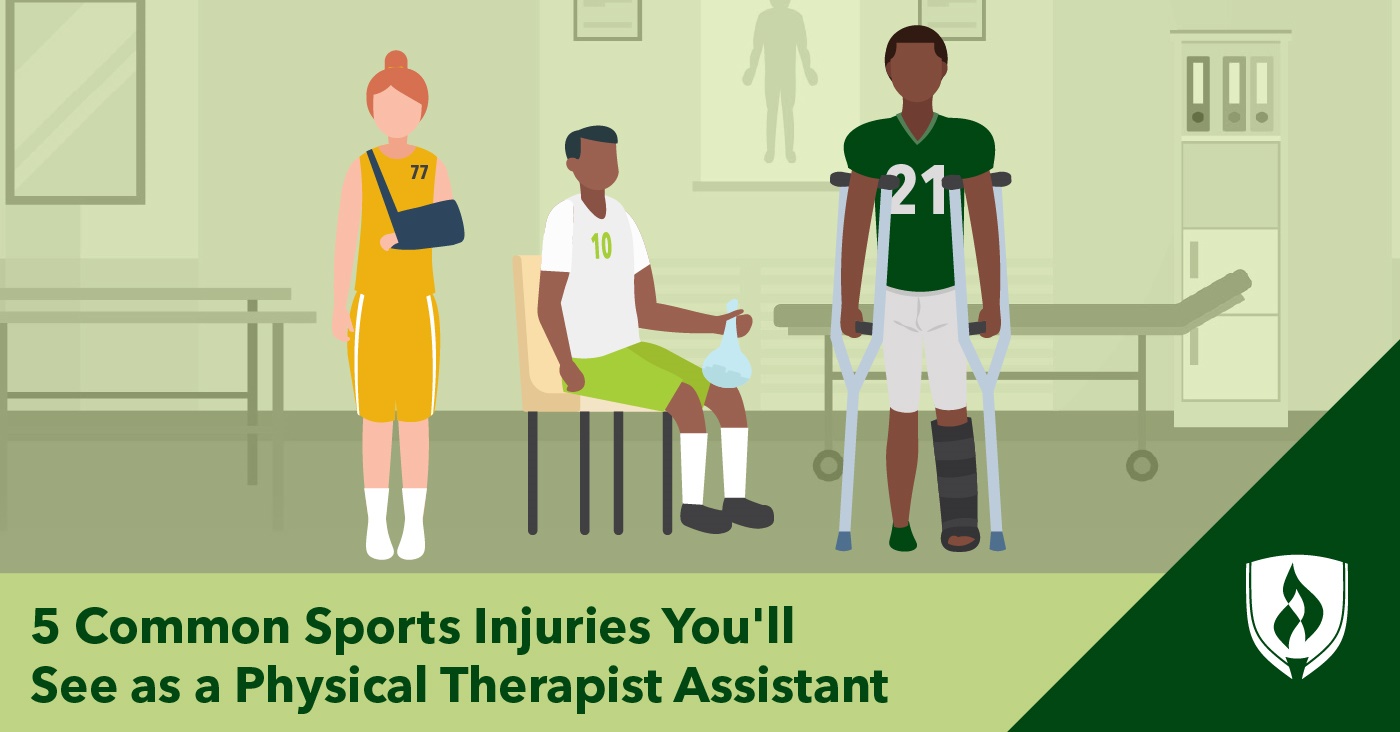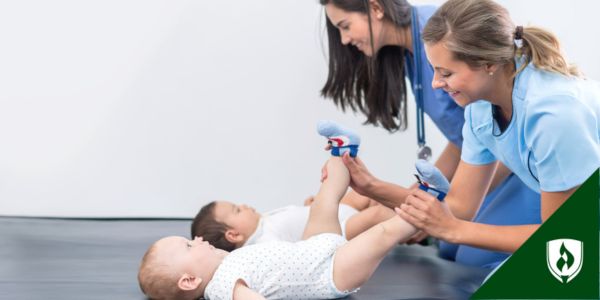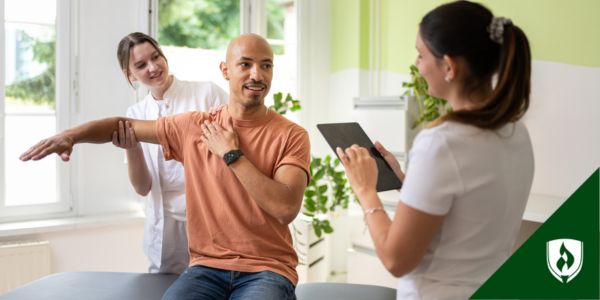5 Common Sports Injuries You'll See as a Physical Therapist Assistant
By Carrie Mesrobian on 11/08/2021

We all love seeing the high-flying dunks, pinpoint passing and incredible feats of strength our sports stars pull off on a daily basis. But on the flip side, no one likes to see the physical toll from these activities finally win out and put an athlete on the sidelines. Every sports fan knows that with great athletic feats, there are also often injuries—and if you’ve ever sprained an ankle in a pick-up game, you know firsthand how challenging that recovery process can be.
Physical therapists and their assistants work with a wide range of patients, from grandma as she recovers from hip replacement surgery to the high school soccer star tending to a ligament injury. They play a direct, hands-on role in guiding their rehabilitation and helping to ensure they’re back up to speed as soon as possible.
To give you the inside scoop on the types of athletic injuries they tend to on a regular basis, we asked physical therapists (PTs) to share some of the most common sports injuries they see in their practice—and what they do to help patients recover and get back in the game.
5 Common sports injuries physical therapists treat
1. Knee pain related injuries
The impact, exertion, twisting and bending that come with competitive sports often puts the knees of those involved at risk. While this can cover a broad range of issues, varying degrees of knee pain are a common issue for athletes.
Swen-Marie Germann, physical therapist and owner of AGADA Physical Therapy and Integrative Health Center, reports commonly seeing patients facing a variety of knee-related issues. This includes knee ligament injuries such as sprains, tears and muscular strains that lead to knee pain, typically from the hamstring.
Patients with these types of injuries often have difficulty running, changing directions or jumping, Germann says. She works with them to strengthen their supporting muscles (quadriceps, hamstrings, calves) as well as gluteal and core muscles.
“Trigger point dry needling and manual therapy also help decrease muscular tension, pain and inflammation,” Germann adds. Gait training and plyometrics can also be beneficial for these patients.
2. Anterior cruciate ligament (ACL) sprains and tears
While this certainly can fall under the umbrella of knee pain, anterior cruciate ligament (ACL) sprains deserve their own mention as one of the most serious—and common—injuries athletes face.
Dr. Whitney Fitzpatrick says that ACL injuries are something she regularly sees in her practice at City PT. Despite the nasty reputation of ACL issues, she notes that this injury doesn’t necessarily require surgery to heal.
“It’s a common misconception that all ACL tears—which total roughly 40 percent of sports injuries—require surgery,” Fitzpatrick explains. “A minor tear from three weeks ago where the pain and swelling are not going away is the perfect scenario for a PT to assess whether it warrants an orthopedic consult. The physical therapist will also help the athlete improve the strength, range of motion and agility of their knee, thereby increasing their confidence in their ability to return to sport.”
3. Achilles tendinitis and plantar fasciitis
Achilles tendinitis and plantar fasciitis are injuries affecting the foot and heel. Achilles tendinitis (or tendinopathy) affects the tissue connecting the calf muscles to the heel bone, while plantar fasciitis is caused by the inflammation of the connective tissue along the sole of the foot. Both are commonly seen in runners and athletes who jump a lot.
The first thing Germann checks when a patient presents with Achilles tendinitis is their footwear.
“They may need an over-the-counter insert or heel lifts to decrease strain on the Achilles tendon,” Germann says. She also has patients do gentle stretching and work on strengthening the gastroc soleus, or calf, muscles.
“Trigger point dry needling can also help improve blood flow, promote healing and decrease muscular tension,” Germann adds.
According to Elisabeth Taunton, physical therapist and owner of Elisabeth Taunton Physiotherapy & Pilates, plantar fasciitis is often an overload issue attributed to weak gluteal and core muscles.
“Adding balance and stability work and progressing to plyometric and bounding work is helpful,” Taunton says.
Manual therapy, rolling on a small ball and an explanation of orthotics and proper footwear choices are also Germann’s go-to methods for patients with plantar fasciitis.
4. Concussion
Concussions are a common occurrence in many contact sports. Athletes colliding with other athletes or sports equipment, whether or not they use padding, protection or helmets, are often diagnosed with concussions as the brain get literally rattled within their skull. In recent years, the focus on this condition has heightened, as media has focused more on pro athletes suffering from traumatic brain injuries (TBI) due to repeated concussive force.
While a brain injury might not be the first ailment you’d associate with physical therapy, concussions can cause issues with balance and dizziness that may be treatable in part through vestibular rehabilitation techniques.
“A football player with a concussion should consult with a physical therapist to determine if the concussion is mild and uncomplex,” suggests Fitzpatrick. “The PT could communicate with the athlete’s school, coach or family to inform them if physical therapy will be enough to optimally recover. If the injury is more complex, the PT could recommend a neurologist or psychologist be added to the care team.”
5. Tennis elbow or golfer’s elbow
Tennis elbow and golfer’s elbow are both injuries affecting the tendons in the forearms. Tennis elbow, also known as lateral epicondylitis, causes pain the inside area of the elbow, while Golfer’s elbow, or medial epicondylitis, causes it on the outside area. Both injuries can cause pain gripping, in particular a racket or a golf club, and impede wrist extension, says Germann.
Regardless of how a patient got the injury—it can happen to non-athletes as a repetitive stress injury, as well—Germann approaches it with similar treatments, including trigger point dry needling.
“Strengthening the forearm muscles and manual therapy for the wrist and elbow joints is also helpful,” Germann says.
Healing to get back in action
Injury is a part of athletics, as well as life in general. For Germann, dealing with sports injuries is something she’s encountered not just as a physical therapist, but also as a patient herself.
“As an athlete myself, I can appreciate the desire not to be sidelined by an injury,” says Germann. “Athletes tend to work hard and do what they are told. Compliant patients usually recover quicker.”
Telling athletes to stop doing their favorite activity can be a challenge. While Germann doesn’t enjoy telling these patients to take a break, her goal is for them to heal and get back to playing, so she focuses on teaching them ways to slow down or modify their training.
Thankfully, there are physical therapists and physical therapist assistants who are trained to help athletes (and armchair athletes) recover from injuries so they can get back into competition.
Does this line of work sound like it could be right for you? The path to becoming a physical therapist assistant may be shorter than you expect, making it a great option for anyone looking to get started in a rewarding healthcare career sooner rather than later. Check out our article “7 Signs You Should Consider Becoming a Physical Therapist Assistant” for more insight into the type of person who’d thrive in this role.




